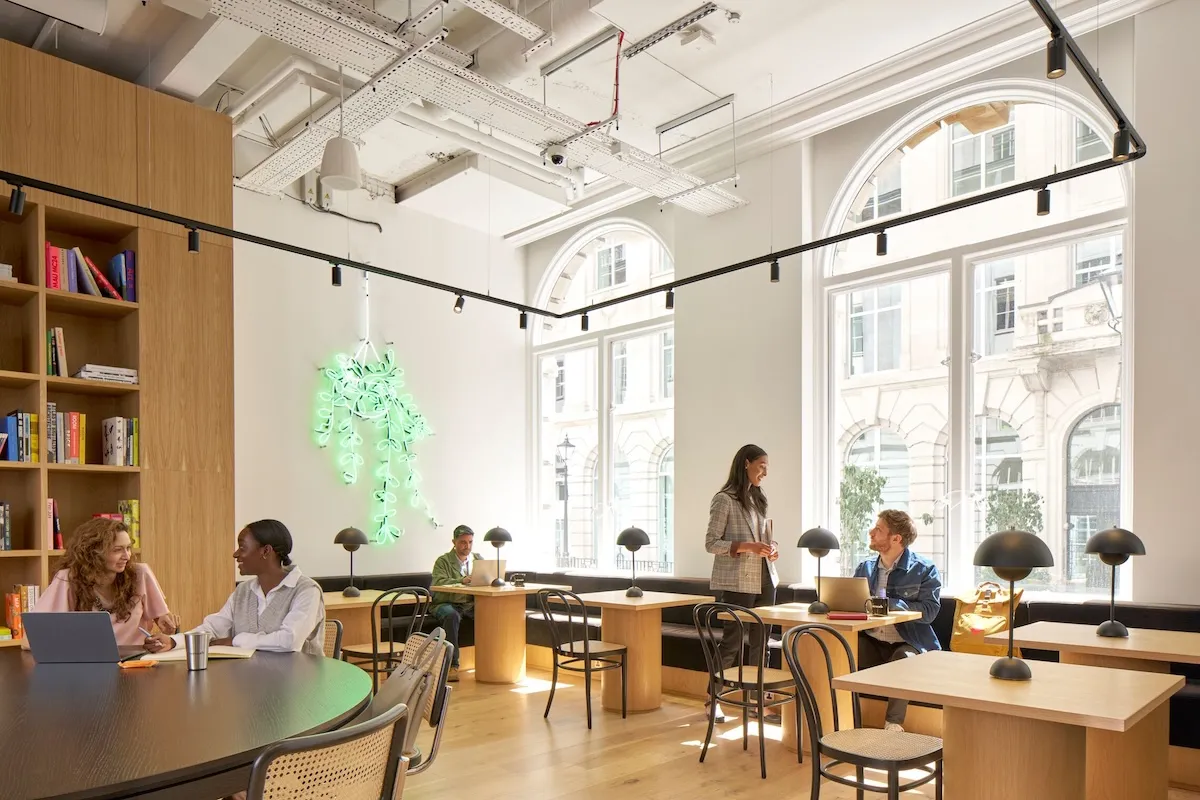Even though breakfast is the most important meal of the day, too many people consume nothing more than a coffee or a doughnut in the morning. Show your employees how much you appreciate them by offering breakfast at the office. Sitting down for a meal together gives everyone a chance to relax and socialize before starting the day.
There are so many benefits to providing breakfast for your team: Bonding over breakfast can improve morale, which can lead to employees feeling more engaged and productive. Plus, your workers’ concentration can vastly improve if they’ve started the day with some sustenance.
Whether you’re hosting an office breakfast for the first time or just want to try something different, we’ve got plenty of ideas for you. Take a look at the following options and tips.
Breakfast at the office

Whether you’re celebrating a holiday or just want to thank your staff for their hard work, you can make the event as extravagant or as casual as you’d like. The menu items you choose will depend on your budget, the general atmosphere of the office, and the statement you want to make.
For the following office breakfast ideas, consider including the usual beverages: coffee, tea, orange juice, or other fruit juices like cranberry or grapefruit.
The breakfast buffet
If you want to go all-out, offer up a catered breakfast. Whichever company you choose should provide plates, cutlery, napkins, and anything else you need, though if your office is prioritizing sustainability with non-plastic dishware, you should stick with those. (For example, WeWork’s offices provide sustainable silverware and other kitchen essentials for our members.) For breakfast buffet success, try hot and cold food options.
Hot food options may include:
- Scrambled eggs, served plain or with toppings such as green peppers, mushrooms, or cheese
- Grilled-meat alternatives such as Beyond Meat or Impossible sausages, eggs, and biscuits
- Potato-based items; think classic hash browns or home fries
- Waffle stations with fresh fruit, whipped cream, and syrups
- Omelet stations that let employees add various cheeses, herbs, or vegetables
Cold food options may include:
- Muffins, croissants, and scones served with preserves and butter
- Fresh fruit salad or a fruit platter
- Individual yogurts or yogurt parfaits
- Cereal with dairy and nondairy milk options
Many caterers offer personalized plated meals. This works best if you want breakfast to feel more formal and traditional. However, a buffet is probably more convenient if your employees have different dietary needs.
The healthy breakfast
If serving healthy food for breakfast is part of the company wellness program or part of your personal philosophy, you can pull it off while making your employees happy. The options will differ depending on your region, but some popular foods include:
- A self-serve hot oatmeal station with various milks; dried fruit like raisins, cranberries, or cherries; toasted almonds, walnuts, or pumpkin seeds; and natural sweeteners like honey, agave or maple syrup
- Whole-grain breads with natural peanut butter, almond butter, or fresh avocado
- No-sugar-added cereals with dairy milk and plant-based milks
- A make-your-own-parfait station with Greek yogurt, fresh fruit, and granola
It’s wise to avoid foods high in saturated fat or processed sugar, but remember that the healthiest foods aren’t necessarily fat-free or sugar-free. Look at the nutritional value, not just the calorie count. Choose whole-grain breads over white, processed breads—the additional fiber can help lower cholesterol.
The office-meeting breakfast
Meetings over breakfast can be popular with teams. One element to prioritize here: The food should be relatively simple so that it doesn’t distract employees while collaborating. Try these popular ideas:
- Breakfast sandwiches, like a vegetarian-friendly avocado and tomato
- Bagels with assorted cream cheeses, jams and jellies, and peanut butter
- Baked goods like muffins, scones, or coffee cake
- Fruit kebabs or a fruit platter
Instead of serving the usual pot of coffee, consider taking everyone’s order and having their favorite latte, espresso, tea, or other hot beverage delivered. If this isn’t possible, coffee will certainly do.
The breakfast potluck

Do your employees like to get really involved in events? Do you think a breakfast potluck suits your company size better than a catered event would? If you answered “yes” to either of these questions, your options are limited only by your imagination (and by your employees’ cooking skills). Just a few of the many ideas for breakfast potluck dishes include:
- Breakfast pizza, which typically contains eggs, greens and cheese
- Homemade granola bars
- Breakfast strata made with any combination of vegetables
- Pancakes or waffles—you can use gluten-free bread to make gluten-free French toast
- A fruit platter (ideal for the cooking-impaired)
- Mini-breakfast burritos—stuff them with beans, rice, salsa, and avocado to make them vegan-friendly
- Monkey bread (also known as sticky bread). This pastry tastes more like dessert than breakfast, but it’s a serious crowd-pleaser
If your company doesn’t have a breakfast club, find out if your employees want one. People who enjoy cooking will most likely appreciate having a breakfast club. If your office has a kitchen, that makes prep even easier.
Three general tips for breakfast at the office
Once you’ve chosen a menu, the most time-consuming part of the planning is over. Still, your work isn’t finished. Consider these tips before you order food (if you’re hiring a catering company), set the date and time, and announce the breakfast to your team.
1. Set aside enough time
This advice may seem obvious, but it’s still worth mentioning: You should set aside a good chunk of time for an office breakfast. After all, the point is to give your employees a break. An hour usually allows enough time to socialize and eat at a relaxed pace. Scheduling an actual time also shows employees you put in extra effort, which can help them feel valued.
2. Consider dietary needs
It’s easy to overlook special diets, and taking everyone’s needs into account is especially challenging if you have a large team. Before you order food, send out a survey to double check the special diets in the office, even if you think you already know what they are. You may need to provide vegetarian, vegan, gluten-free, kosher, or halal options. Anyone’s health status, religion, or personal beliefs may change at any time, so they may not eat the same foods as you remember. You should also check for allergies. The most common allergies involve fish, shellfish, tree nuts, peanuts, eggs, wheat, and soy. If an employee has a rare or unusual allergy, such as an allergy to black pepper, corn, or bananas, you’ll need to make special arrangements.
3. Account for different work schedules
Not everyone works a 9-to-5. If you have employees on different shifts, make sure that everyone gets breakfast (or lunch, if that makes more sense). You can order food in batches and have them delivered for each shift so nobody has to eat leftovers. Ask employees on the afternoon or night shifts if they’d like to host their own potlucks.
No matter which breakfast option you choose, the most important thing is to include everyone. The next time you schedule breakfast at the office, try at least one of these menu suggestions. You just might discover a new favorite recipe or tradition.










